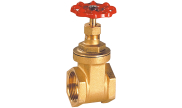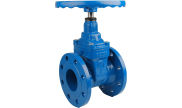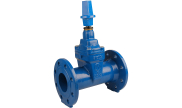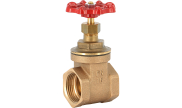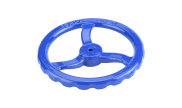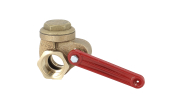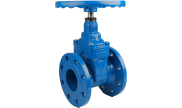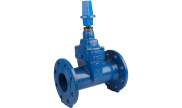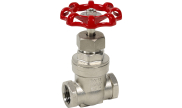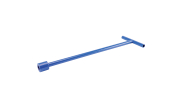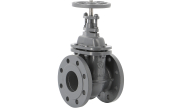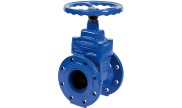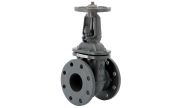Local Storage seems to be disabled in your browser.
For the best experience on our site, be sure to turn on Local Storage in your browser.
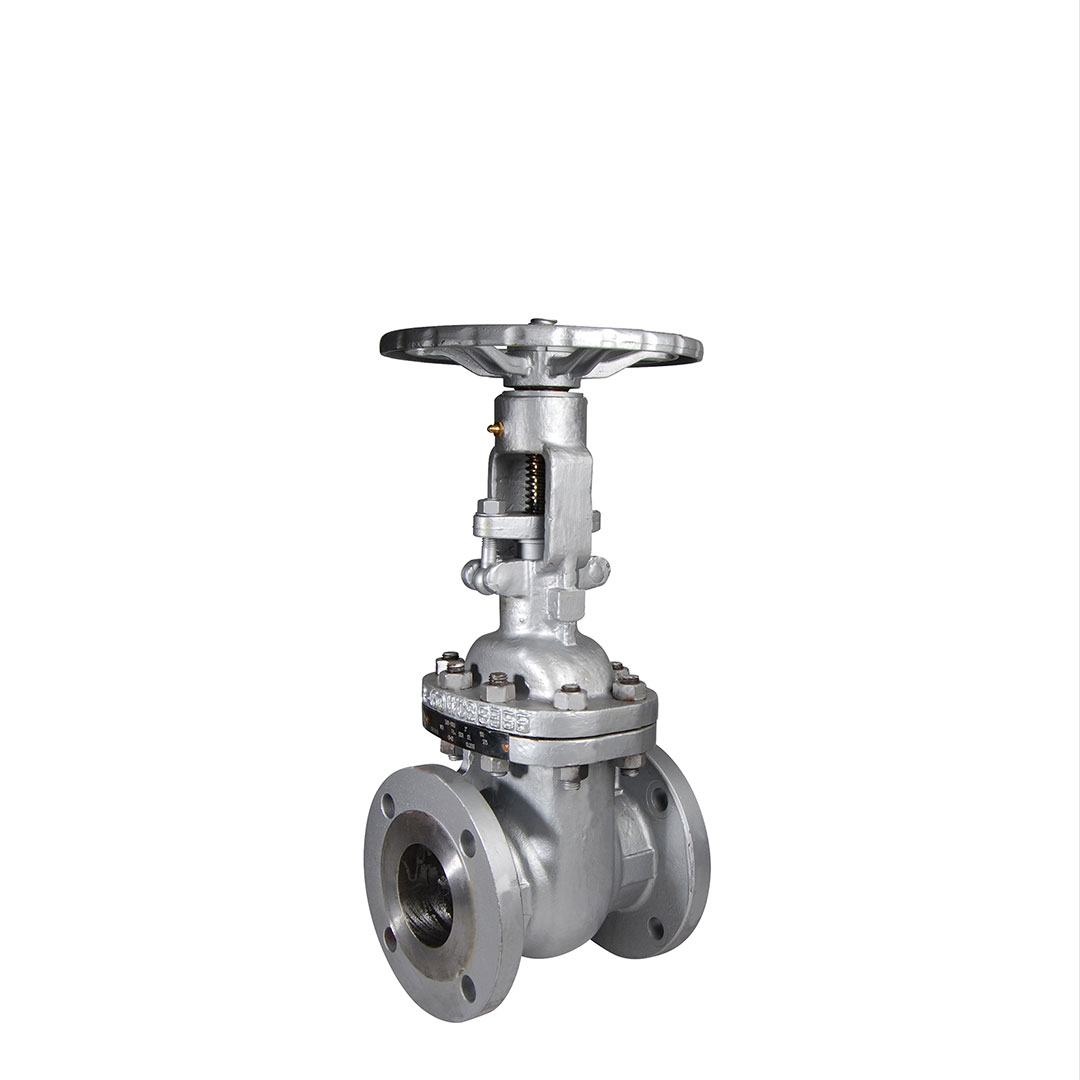
Gate valves
The role of the gate valve
Gate valves, or wedge gate valves, are multiturn actuated valves equipped with a linear motion shutter. They are most often used to block fluids. This type of valve is widely used in the industrial field and in water distribution networks, but also in heating and ventilation systems. It is highly reliable and very easy to operate on small sections of pipes as well as on very large diameter ducts.
Gate valves are mainly used as stop valves: the wedge inside their bodies either completely stop the flow or allow it to run fully and freely when the valves are open. When the wedge is up, it creates a full bore that prevents pressure loss. The multiturn operation allows the valve to open and to close gradually, preventing any water hammer in the system. If a gate valve is used with partial opening, flow regulation is then imprecise and uneasy to control.
Main features of the gate valve
Gate valves are made up of several parts: body, cover, wedge, seats, stem, and operating system (handwheel, gearbox, or square drive nut).
Depending on the type of fluid, the body and sealing parts are different. The body (and the bonnet) is in cast iron, carbon steel, bronze or brass, allowing the valve to be used in a great number of fields such as chemical and petrochemical industries, utilities, or drinking water pipes.
The metallic wedge is the answer to specific pressure and/or high temperatures conditions thanks to its metal/metal tightness quality (wedge directly on valve body or seat), without any distortion. The seats are also made of metal. They are mechanically crushed by the wedge, providing tightness. Tightness is then reinforced by fluid pressure on the wedge. Metal seated valves require a small depression at the bottom of the valve, allowing the wedge to fully cut through the fluid flow when getting into the body. The result is a loss of tightness over time, because impurities build up in the gap between the bottom and the wedge.
The rubber wedge is a way to operate without any seat: the elastomer is pressed, thus providing total tightness to the valve. Plain bottoms in resilient seated gate valves prevent impurities from building up. The whole body is coated with epoxy for greater durability of the final product. Resilient seated gate valves are most frequently used on water distribution systems, and on irrigation and sewage networks.
Gate valves are used in most common pipe diameters, in the piping and plumbing industries. They are most often equipped with BSP connections for small diameters (up to 2” or 4”), and with flanged connections for bigger sections, from DN40 and up to more than DN800 diameters.
Closing the valve requires either a clockwise (clockwise to close or CTC) or an anticlockwise (clockwise to open or CTO) motion of the operating system, depending on each trade or geographical area: when the threaded stem moves, the gate goes up or down, thus opening or closing the valve.
A distinction should also be made between gate valves with rising stem and gate valves with non-rising stem. The rising stem is fixed to the gate. It rotates and goes up and down when operated, allowing visual control of the opening valve. This construction is suitable for above-ground systems. On the contrary, the non-rising stem is threaded into the gate, staying inside the valve body while the valve is opening. This configuration is suitable in confined spaces, for above-ground and underground installations.
In short, the gate valve key strengths are solidity, reliability and direct passage, which prevents a maximum of head loss on wide area networks such as water supply or community heating systems, or industrial facilities.

